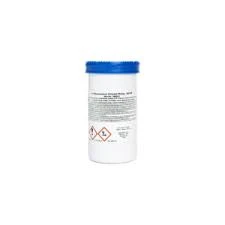hedp water treatment
The Role of HEDP in Water Treatment
In recent years, the use of chemicals for water treatment has garnered significant attention due to the necessity of ensuring safe and clean water for consumption and industrial purposes. One such chemical compound that has proven effective in this domain is 1-Hydroxyethylidene-1,1-diphosphonic acid (HEDP). This article will delve into the chemical properties of HEDP, its role in water treatment, and its advantages over other substances.
What is HEDP?
HEDP is a phosphonic acid and a highly effective scale inhibitor and corrosion inhibitor. Its molecular structure allows it to chelate metal ions and prevent the formation of scale, which can be detrimental in various water systems, particularly in industrial applications. HEDP is often deployed in water systems that undergo heating or high pressure, where the risk of scale formation is heightened.
Mechanism of Action
HEDP works by binding to metal ions in water, which prevents these ions from precipitating out of solution and forming unwanted deposits. In industrial settings, scale can build up on pipes, heat exchangers, and other equipment, leading to inefficiency, increased maintenance costs, and potential equipment failure. By inhibiting scale formation, HEDP helps maintain the operational efficiency of these systems and extends the lifespan of critical infrastructure.
Advantages of HEDP in Water Treatment
hedp water treatment

One of the key advantages of HEDP is its high stability across a broad range of pH levels. This characteristic means that HEDP can effectively function in different water conditions, making it a versatile choice for various applications. Unlike other phosphonates, HEDP exhibits lower toxicity levels, which makes it safer for use in environments where human health is a concern, such as drinking water treatment.
Additionally, HEDP is biodegradable and does not contribute to the accumulation of harmful substances in the environment. This property aligns with current trends in environmental sustainability, where the reduction of chemical pollutants is paramount. As water treatment regulations become stricter, the embrace of less harmful alternatives like HEDP is increasingly prevalent.
Applications of HEDP in Water Treatment
HEDP is employed in a variety of sectors, including municipal water treatment facilities, cooling towers, and boiler systems. In municipal water treatment, HEDP is used to control scaling and corrosion in pipes, ensuring safe delivery of potable water. In industrial cooling systems, it mitigates scale formation on heat exchange surfaces, thus optimizing energy consumption and reducing downtime for maintenance.
Moreover, HEDP plays a crucial role in the oil and gas industries, where it is used to treat water extracted during drilling operations. Ensuring that produced water is treated adequately is not only essential for maintaining operational efficiency but also for protecting surrounding ecosystems.
Conclusion
In conclusion, HEDP is a potent and versatile chemical agent in the realm of water treatment. Its ability to inhibit scale formation while remaining environmentally friendly makes it a valuable tool for industries striving to improve efficiency and reduce environmental impact. As the global community becomes increasingly focused on sustainable practices, HEDP is likely to play an even more prominent role in the future of water treatment applications. With its proven efficacy, safety, and adaptability, HEDP stands out as a premier choice for addressing the challenges of water quality management in various settings.
-
Water Treatment with Flocculant Water TreatmentNewsJun.12,2025
-
Polymaleic AnhydrideNewsJun.12,2025
-
Polyaspartic AcidNewsJun.12,2025
-
Enhance Industrial Processes with IsothiazolinonesNewsJun.12,2025
-
Enhance Industrial Processes with PBTCA SolutionsNewsJun.12,2025
-
Dodecyldimethylbenzylammonium Chloride SolutionsNewsJun.12,2025





